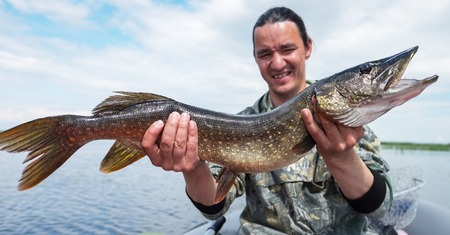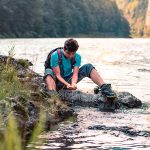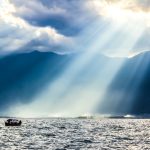Journey Into the Wild: Why Alaska is Every Angler’s Dream
When it comes to backcountry fishing in the United States, few places spark the imagination like Alaska. Nicknamed “America’s Last Frontier,” Alaska offers a rugged, unspoiled wilderness that feels like stepping into another world. For anglers across the country, it’s not just a destination—it’s a dream come true.
Alaska is massive. Were talking over 663,000 square miles of raw beauty filled with towering mountain ranges, deep forests, glacial rivers, and thousands of lakes—many of which are only accessible by floatplane or hiking for miles off the grid. It’s this remoteness that makes Alaska so special for backcountry fishing enthusiasts. You’re not just casting your line; you’re immersing yourself in nature at its wildest.
But what truly puts Alaska on every angler’s bucket list is its legendary fish population. Whether youre fly fishing for Arctic grayling in a crystal-clear stream or battling a king salmon in a remote river, Alaska delivers unforgettable experiences.
What Makes Alaska Unique for Backcountry Fishing?
| Feature | Why It Matters to Anglers |
|---|---|
| Remote Wilderness | No crowds, untouched waters, and pure solitude |
| Diverse Fish Species | From rainbow trout to all five species of Pacific salmon |
| Accessible Only by Plane or Foot | Adds adventure and exclusivity to each trip |
| Extended Daylight Hours (in Summer) | More time on the water during peak season |
A Land Built for Adventure
The sheer variety of fishing environments means theres something for every type of angler. Want to wade through icy streams chasing wild trout? Alaska has it. Prefer drifting down wide rivers surrounded by bear country? You’ll find that too. And if you’re after trophy-sized fish in untouched settings, there’s no better place in North America.
This combination of natural beauty and world-class fishing is why so many American anglers consider a trip to Alaska more than just another vacation—it’s a rite of passage.
2. The Fish of the Frontier: Iconic Species You’ll Encounter
When it comes to backcountry fishing in Alaska, the true stars of the show are the incredible fish species that call these wild waters home. Anglers from all over the United States make the journey north for a chance to catch some of America’s most legendary game fish. Whether youre fly fishing in a remote river or casting from the shore of a hidden lake, Alaska offers a once-in-a-lifetime opportunity to hook into something unforgettable.
King Salmon (Chinook)
Known as the “king” for a reason, Chinook salmon are the largest of all Pacific salmon species and a top prize for any serious angler. These powerful fish can weigh anywhere from 20 to over 50 pounds and put up an impressive fight. The peak season for king salmon runs from mid-May through July, especially in rivers like the Kenai and the Nushagak.
Arctic Grayling
Easily recognized by their sail-like dorsal fin and iridescent colors, Arctic grayling are a favorite among fly anglers. Found in clear, cold streams across interior Alaska, these elegant fish aren’t huge—typically ranging from 10 to 18 inches—but they make up for it with beauty and personality. Dry flies work wonders when targeting grayling in remote creeks and alpine lakes.
Northern Pike
If you’re looking for excitement, northern pike deliver with explosive strikes and toothy grins. These aggressive predators lurk in weedy bays and slow-moving waters, often ambushing their prey with lightning speed. Commonly found in western and interior Alaska, pike can grow well over 40 inches long and provide heart-pounding action on both spin and fly gear.
Quick Guide: Popular Alaskan Game Fish
| Species | Average Size | Best Time to Catch | Where to Find Them |
|---|---|---|---|
| King Salmon | 20–50+ lbs | May–July | Kenai River, Nushagak River |
| Arctic Grayling | 10–18 inches | June–August | Interior streams & alpine lakes |
| Northern Pike | 20–40+ inches | Late spring through summer | Western & Interior Alaska lakes/rivers |
A Diverse Fishing Playground
The variety of fish available in Alaska makes every trip unique. One day you might be drifting for massive kings, and the next youre wading a crystal-clear stream catching grayling on dry flies. This diversity is what keeps anglers coming back year after year—and why Alaska remains one of America’s ultimate fishing frontiers.

3. Off the Grid: Accessing Remote Rivers and Lakes
Getting to Alaska’s most secluded fishing spots isn’t as simple as parking your truck and walking a few steps to the water. Out here in the Last Frontier, reaching untouched rivers and lakes often means going completely off the grid. But that’s part of the adventure. Whether it’s flying over snow-capped peaks in a floatplane, bouncing along rugged trails on an ATV, or lacing up your boots for a backcountry hike — every journey into Alaska’s wild heart is as memorable as the fishing itself.
Floatplane Travel: Taking to the Skies
One of the most iconic ways to access remote fishing areas in Alaska is by floatplane. These small aircraft are designed to land on water, making them perfect for reaching isolated lakes and river systems with no roads in sight. Pilots often double as seasoned guides who know where the fish are biting. The views from above — glaciers, dense forests, winding rivers — are worth the trip alone.
What to Expect on a Floatplane Trip:
| Feature | Details |
|---|---|
| Departure Points | Anchorage, Fairbanks, or remote lodges |
| Flight Time | 30 minutes to 2 hours depending on location |
| Destinations | Remote lakes, hidden streams, fly-in only camps |
| Gear Limitations | Weight restrictions apply – pack light! |
| Bonus Perk | Sightseeing included – keep your camera ready |
ATV Adventures: Riding into the Wilderness
If you prefer staying grounded, ATVs (All-Terrain Vehicles) offer another rugged way to reach hard-to-access fishing holes. These machines can take you down muddy logging roads, across shallow streams, and deep into areas where few anglers venture. Some outfitters even offer guided ATV fishing tours that combine off-roading thrills with expert fishing guidance.
Tips for ATV Fishing Access:
- Wear protective gear: Helmets, gloves, and waterproof layers are essential.
- Plan fuel stops: You won’t find gas stations in the backcountry.
- Secure your gear: Use bungee cords or storage boxes to keep rods and tackle safe.
- Check local rules: Some areas have ATV restrictions to protect wildlife and terrain.
Hiking to Hidden Spots: Earning Every Cast
For those willing to put in some legwork, hiking offers access to crystal-clear creeks and alpine lakes untouched by motors or machines. It’s not uncommon to walk several miles through forest or tundra before reaching your destination — but solitude and pristine waters make it well worth the effort.
Packing Essentials for Hike-In Fishing:
- Lightweight rod and reel combo
- Compact tackle kit with versatile lures or flies
- Mosquito repellent (trust us on this one)
- A reliable GPS or offline map app
- Bear spray – safety first in bear country!
No matter how you choose to get there — by plane, ATV, or boot leather — accessing Alaska’s backcountry waters is all part of the journey. These remote destinations offer more than just world-class fishing; they give you stories that last a lifetime and experiences far beyond the ordinary.
4. Tackle and Techniques: Gearing Up for the Alaskan Wild
Fishing in Alaska’s backcountry isn’t your average weekend trip. The terrain is wild, the weather is unpredictable, and the fish are as tough as they come. To make the most of your adventure in America’s Last Frontier, you’ll need gear that’s rugged, reliable, and tailored to Alaskan conditions.
Essential Fishing Gear
Whether youre targeting salmon in fast-moving rivers or hunting trophy-sized trout in alpine lakes, choosing the right tackle makes all the difference. Here’s a breakdown of must-have gear for backcountry fishing in Alaska:
| Item | Description |
|---|---|
| Fly Rod (7-9 wt) | Ideal for salmon and large trout; strong enough to handle heavy fish and long casts. |
| Spinning Rod (Medium-Heavy) | A versatile choice for casting lures or bait; great backup if fly fishing conditions are tough. |
| Reel with Strong Drag | A high-quality reel with smooth drag is critical when fighting powerful fish. |
| Floating & Sink-Tip Lines | Carry both to adapt to different water depths and current speeds. |
| Leaders & Tippets (8-15 lb test) | Use heavier leaders for salmon; lighter tippets work better for finicky trout. |
| Waders & Boots | Breathable chest waders and felt-soled boots help you access remote riverbanks comfortably and safely. |
| Polarized Sunglasses | Helps reduce glare and spot fish below the surface more easily. |
Effective Techniques for Alaskan Waters
The methods you use can vary greatly depending on species, time of year, and location. Here are some proven techniques that work well in the Alaskan wild:
- Fly Fishing: Drift large streamers like egg-sucking leeches or flesh flies through deep runs where salmon rest. For trout, try dry flies during hatches or nymphs under indicators.
- Casting Spoons or Spinners: Mepps, Vibrax, and Pixee spoons are go-to choices for aggressive coho or pink salmon in faster water.
- Dead Drift with Beads: Mimic spawning eggs by drifting colored beads just above the riverbed—especially effective for rainbow trout and Dolly Varden.
- Trolling from Rafts or Canoes: In larger lakes, trolling with flatfish lures or streamer flies can attract lake trout and Arctic char.
Don’t Forget Survival Essentials
You’re not just fishing—you’re venturing into remote wilderness. Always be prepared with these backcountry essentials:
| Survival Item | Why You Need It |
|---|---|
| Bear Spray | Bears are common near rivers during salmon runs—stay safe at all times. |
| Satellite Communication Device | No cell service here; a GPS communicator could save your life in an emergency. |
| First Aid Kit | Treat cuts, sprains, or insect bites while off-grid. |
| Water Filtration System | Lakes and streams may look clean but often carry bacteria—always filter before drinking. |
| Fire Starter Kit | If weather turns bad or you get stranded, fire provides warmth and safety. |
| Multi-tool or Knife | A critical tool for gear repair, food prep, or emergencies. |
| Packed High-Calorie Snacks | You’ll burn energy fast hiking between spots—keep fueled up throughout the day. |
Packing Smart for Alaska’s Backcountry Conditions
The key to a successful Alaskan fishing trip is balance: pack light enough to hike but thorough enough to be safe. Use waterproof bags to protect essentials from rain and river spray. Layer clothing so you can adjust as temperatures change throughout the day—from frosty mornings to warm afternoons under the midnight sun.
Pro Tip:
“Rig up before you hit the trail,” says local guide Jake Thompson from Talkeetna. “When you find a good hole out there, you want to be ready to cast—not fumbling with knots while fish are jumping.”
This kind of preparation ensures that once youre deep in Alaskas untouched backcountry, all thats left is you, your rod, and the wild waters teeming with opportunity.
5. More Than Just Fishing: Embracing the Alaskan Outdoor Lifestyle
Backcountry fishing in Alaska is about so much more than casting a line into pristine waters. Its an all-encompassing outdoor experience that immerses you in the raw, untouched beauty of Americas Last Frontier. Whether youre hiking through ancient forests, setting up camp beneath the aurora borealis, or learning from Native traditions, every moment adds depth to your Alaskan adventure.
Wildlife Encounters You’ll Never Forget
Alaska is home to some of North America’s most iconic wildlife. While youre out fishing, don’t be surprised if you spot a bald eagle soaring overhead or a moose grazing near the riverbank. Bears—both black and grizzly—are also common in remote areas, so always keep a safe distance and follow local safety guidelines.
| Animal | Where You Might See It | Safety Tip |
|---|---|---|
| Bald Eagle | Near rivers and lakes | Use binoculars; avoid disturbing nests |
| Grizzly Bear | Forests and along salmon streams | Carry bear spray; make noise while hiking |
| Moose | Wetlands and wooded areas | Stay at least 50 yards away; never approach calves |
Camping Under the Northern Lights
One of the most magical parts of backcountry life in Alaska is the chance to see the northern lights dance across the sky. Late summer and early fall are prime times for viewing the aurora borealis, especially when you’re far from city lights. Bring a warm sleeping bag, a good tent, and your camera—you won’t want to miss it.
Essential Gear for Backcountry Camping:
- Four-season tent with rain fly
- Cold-weather sleeping bag (rated for below freezing)
- Portable stove and food storage containers (bear-proof)
- Headlamp with extra batteries
- Water purification system
Respecting Alaska Native Cultures
The land you’re exploring has been home to Indigenous peoples for thousands of years. Many areas still hold deep cultural significance to Alaska Native communities. When passing through these lands, its important to show respect—observe posted signs, avoid disturbing historic or sacred sites, and follow any local guidelines or advice.
A Few Ways to Show Respect:
- Avoid taking anything from natural or cultural sites (including rocks or artifacts)
- If invited into a Native village, ask questions respectfully and listen actively
- Support local Native-owned businesses when possible (guides, crafts, accommodations)
This broader connection to nature, culture, and community makes backcountry fishing in Alaska an unforgettable journey that goes far beyond catching fish. It’s about embracing everything this wild and beautiful land has to offer.


